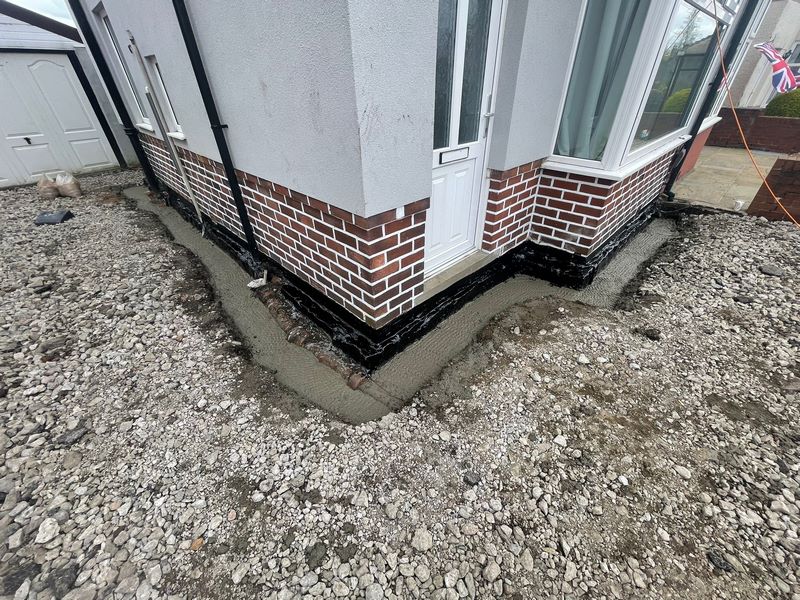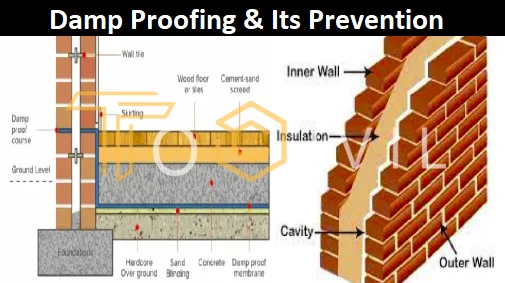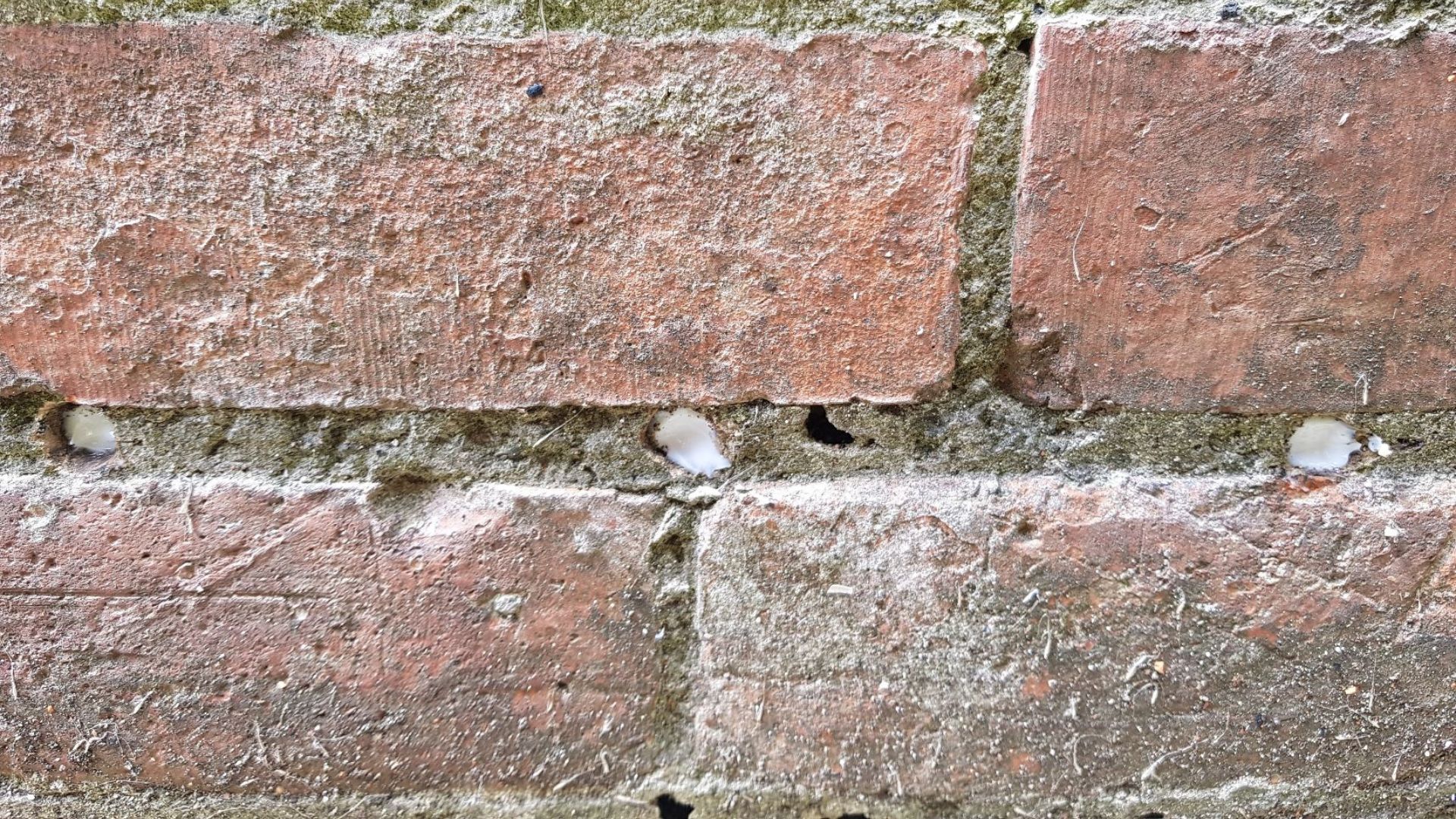Comprehensive list for damp specialist newcastle to identify moisture issues early
Comprehensive list for damp specialist newcastle to identify moisture issues early
Blog Article
Exploring the Numerous Techniques and Solutions for Effective Damp Proofing
Moisture in structures poses considerable challenges to both structural stability and indoor air top quality. Various techniques and options have arised to combat this pervasive issue. From typical damp-proof membrane layers to innovative chemical treatments, each method provides one-of-a-kind benefits. Understanding these options is crucial for effective wetness control. Nonetheless, choosing the right remedy relies on details building conditions and needs, prompting more expedition right into one of the most efficient moist proofing methods readily available.
Understanding the Causes of Wetness
Although dampness can occur from different sources, recognizing these reasons is crucial for efficient remediation. Typically, moisture stems from three key sources: climbing moist, permeating damp, and condensation. Increasing damp takes place when groundwater takes a trip upwards via permeable materials, such as block or stone, typically because of a lack of a reliable obstacle (mould removal newcastle). Permeating damp is typically caused by external variables, including roofing leakages, defective rain gutters, or harmed wall surfaces, allowing water to infiltrate a residential or commercial property. Condensation, on the other hand, arises from excess wetness in the air, usually aggravated by bad air flow and temperature differences, causing water droplets basing on surface areas. Identifying these underlying concerns is important, as each kind of dampness needs a customized method for removal. Appropriate evaluation helps in figuring out one of the most reliable solutions, eventually securing the architectural stability of a building and improving interior air top quality
Typical Damp-Proof Membranes

Chemical Damp-Proofing Solutions
Chemical damp-proofing remedies use an ingenious approach to avoid wetness intrusion in buildings. These methods generally entail the application of liquid chemicals that penetrate stonework and create a barrier versus rising damp. Generally utilized chemicals consist of silanes, siloxanes, and various other water-repellent representatives that react with surface area materials to create a hydrophobic layer.The application procedure typically calls for drilling holes right into the wall surfaces, injecting the chemical solution, and permitting it to cure. This technique is particularly beneficial for older frameworks where typical damp-proof membranes may be impractical. In addition, chemical damp-proofing can be much less disruptive and much more cost-efficient than extensive improvement projects.While effective, these options depend upon correct application and environmental problems for peak performance. Routine maintenance and tracking are vital to guarantee the longevity of the damp-proofing therapy. Overall, chemical damp-proofing represents a versatile alternative for guarding structures versus moisture-related damages
Dental Caries Wall Surface Building And Construction Strategies
Cavity wall surface building methods use various benefits, specifically in dampness control and energy performance. By including an air gap in between two layers of stonework, these wall surfaces properly reduce water access while boosting insulation. This combination not only shields structures from dampness yet likewise adds to decreased energy intake.
Advantages of Dental Caries Wall Surfaces
When thinking about effective wet proofing techniques, the benefits of cavity wall surfaces stick out prominently. Cavity wall surfaces consist of 2 separate layers, producing an air gap that properly decreases dampness penetration. This design decreases the risk of wetness, as the outer wall works as an obstacle against rainfall and water access. Furthermore, cavity walls boost thermal insulation, which contributes to power effectiveness by lowering heat loss. They likewise provide sound insulation, assisting to develop a quieter indoor environment. The air void allows for ventilation, which helps in wetness control and lowers the likelihood of mold and mildew development. These advantages not only enhance the overall convenience of a structure but likewise add to its long life and architectural integrity.
Dampness Control Approaches
Efficient moisture control strategies are critical in dental caries wall surface building to assure long-term protection against dampness. One key method involves the unification of weep holes, which assist in water drainage from the dental caries, stopping accumulation. In addition, making use of breathable membrane layers can assist manage wetness levels while enabling trapped vapor to get away. Proper placement of insulation is additionally crucial, as it ought to not obstruct drainage courses. Making certain that the external leaves of the tooth cavity wall are built with waterproof products enhances general sturdiness. Normal maintenance checks are important to identify any obstructions or damages early, safeguarding the structure's honesty. Ultimately, a combination of these methods develops a durable protection versus dampness breach in tooth cavity walls.
Insulation and Energy Performance
Insulation plays an important duty in boosting power efficiency within cavity wall surface construction. By integrating insulating materials, these walls develop a thermal barrier that lessens heat loss and decreases energy consumption. Reliable insulation not just helps maintain a steady indoor temperature but additionally minimizes the danger of moisture, as it avoids condensation within the wall surface cavity. Numerous techniques, such as making use of inflexible foam boards or mineral woollen, can be used to attain optimal insulation efficiency. Additionally, appropriate setup is necessary to assure that gaps and spaces are reduced, which can otherwise jeopardize power performance. Inevitably, a well-insulated dental caries wall surface adds substantially to total sustainability and reduces cooling and heating costs for home owners.
Exterior Damp Proofing Approaches
Outside moist proofing approaches are essential for shielding structures from dampness seepage. Two effective strategies include the application of water-proof membranes and the installment of French drains. These remedies aid minimize water buildup and maintain the integrity of structures.
Waterproof Membrane Application
While different methods exist for protecting against moisture access, the application of waterproof membrane layers continues to be a very effective exterior damp proofing method. These membranes are generally made from products such as polyethylene, rubber, or modified asphalt, providing a robust barrier versus water penetration. The setup procedure entails applying the membrane to the outside surface areas of walls or structures, ensuring complete protection to avoid leaks. Proper attachment and sealing at joints are important to maximizing effectiveness. Water resistant membranes can be applied in numerous kinds, including fluid layers and sheet membranes, allowing for adaptability based upon the certain needs of the framework. This method not just protects structures from dampness but likewise enhances their durability and architectural honesty.
French Drain Installment
One efficient approach for managing groundwater and protecting against moisture build-up around a building's structure is the installation of a French drainpipe. This drain system contains a trench full of crushed rock and a perforated pipeline that redirects surface water far from the structure. Proper installation needs careful planning, making certain that the drainpipe slopes away from the structure to assist in perfect water circulation. In addition, the area of the drain is important; it should be placed in locations prone to pooling or excess wetness. Routine maintenance, consisting of cleaning debris from the crushed rock and making sure the pipe remains unblocked, is necessary for long-term performance. Inevitably, a well-installed French drain can considerably minimize the danger of water-related problems in basements and foundations.
Inside Waterproofing Methods
Inside waterproofing techniques are crucial for securing a structure's interior from moisture seepage and possible water damage. These approaches commonly involve get more info the application of customized materials and strategies developed to develop a moisture barrier within the framework. One common technique is making use of water resistant finishes or sealants on walls and floorings, which prevent wetness from passing through surfaces.Additionally, installing indoor water drainage systems, such as sump pumps, can successfully manage water buildup in basements and creep spaces. Another technique includes the usage of vapor obstacles, which are mounted to prevent dampness activity from the ground into living spaces.Moreover, resolving any kind of splits or spaces in walls or structures with ideal sealers assures a thorough protection against water intrusion. By carrying out these indoor waterproofing techniques, homeowner can considerably minimize the threat of mold and mildew development, architectural damage, and various other moisture-related problems. Proper execution of these strategies is important for lasting security and building honesty.
Regular Maintenance and Evaluation Practices
Regular upkeep and examination techniques are crucial for ensuring the long-term efficiency of moist proofing remedies in any type of building. Regular checks allow property proprietors to determine early signs of dampness invasion, such as peeling paint, mold and mildew growth, and musty smells. These signs can signal underlying concerns that need immediate attention.Inspections should be performed at the very least annually, concentrating on susceptible locations like cellars, crawl spaces, and outside wall surfaces. Throughout these evaluations, building owners should examine sealers, drain systems, and ventilation to verify they work correctly.Additionally, maintaining downspouts and gutters is important, as clogged systems can result in water buildup near the structure. Executing a normal maintenance routine, in addition to timely repair services, can substantially extend the life-span of moist proofing measures and safeguard the architectural integrity of the building. Aggressive steps inevitably contribute to the general health and safety and security of the living environment.
Often Asked Inquiries
How Lengthy Does Damp Proofing Usually Last?
The period of wet proofing effectiveness varies, generally lasting in between 20 to half a century. Elements such as application high quality, ecological problems, and upkeep techniques substantially influence the longevity of the moist proofing treatment.

Can I Damp Evidence My Home Myself?
The specific pondered the feasibility of DIY damp proofing. With correct study and the ideal products, it is feasible. They likewise acknowledged the relevance of professional advice to ensure long-lasting effectiveness and prevent future problems.
What Are the Indications of Ineffective Damp Proofing?
Signs of ineffective wet proofing include persistent musty odors, noticeable mold and mildew growth, peeling off paint, moist patches on wall surfaces, and wood degeneration - damp proofing newcastle. Homeowners should address these problems quickly to protect against additional damage and wellness worries
Does Damp Proofing Affect Indoor Air Quality?

Just How Much Does Specialist Damp Proofing Cost?
Professional damp proofing expenses differ considerably, generally varying from $1,000 to $5,000 depending upon the property's size, the extent of the damp issue, and selected techniques. Each circumstance requires a tailored assessment for accurate rates. Generally, moisture originates from 3 primary sources: increasing moist, passing through damp, and condensation. When thinking about efficient damp proofing techniques, the benefits of tooth cavity wall surfaces stand out plainly. Exterior damp proofing methods are essential for shielding structures from moisture infiltration. While various approaches exist for avoiding moisture ingress, the application of water resistant membrane layers continues to be a highly efficient external damp proofing technique. Indications of ineffective wet proofing include consistent musty smells, noticeable mold and mildew development, peeling off paint, moist spots on walls, and wood decay.
Report this page